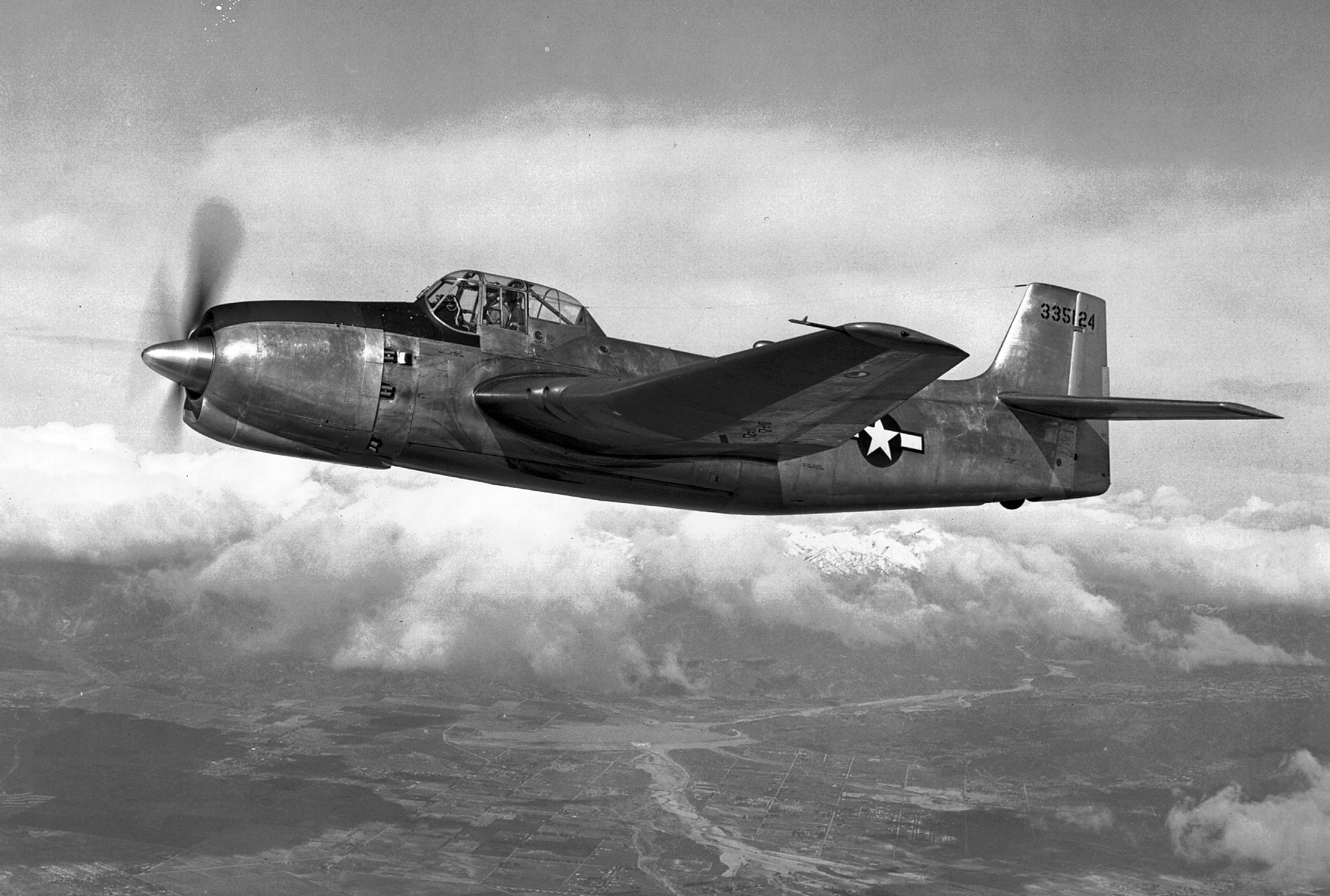It’s a Vultee XA-41.
The Vultee XA-41 was originally ordered by the U.S. Army Air Forces in October 1941 as a dive bomber, in response to Germany’s vaunted Junkers Ju-87 Stuka. After the Stuka’s vulnerability was demonstrated in combat, however, the AAF ordered the XA-41 re-configured as a low-level attack plane. By the time the XA-41 finally made its first flight in February 1944, the AAF decided that it preferred twin-engine aircraft such as the Douglas A-20 and A-26 for the attack mission. As far as single-engine aircraft went, fighter-bombers such as the Republic P-47D were doing a more than adequate job, rendering the more specialized XA-41 redundant.
Nevertheless, by all accounts the XA-41 was an excellent aircraft. It was armed with four 37mm cannons, four .50-caliber machine guns and could carry 6,500 pounds of bombs and rockets. The XA-41 also had a maximum speed of more than 350 mph and was said to be capable of outmaneuvering a North American P-51 Mustang.
Vultee tried to sell the aircraft to the Navy, but with the Martin AM-1 Mauler and Douglas AD Skyraider already under development, it wasn’t interested. Another problem with the XA-41 was that in 1943 Vultee had merged with Consolidated Aircraft to form Convair. The new corporation didn’t regard the single-engine attack plane as a high-priority project, being far more concerned with the development of its B-32 Dominator and B-36 Peacemaker strategic bombers. Although the XA-41 continued flying until 1950, it flew most of its final years for Pratt & Whitney as a testbed for its engine, the then-new 3,000-hp R-4360 Wasp Major.

